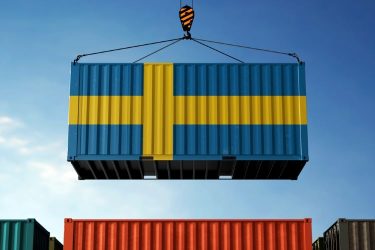
According to SwedenBIO, Sweden‘s life sciences industry is witnessing a continued increase in export values.
Based on statistics from Statistics Sweden, at SEK 152.5 billion, exports of pharmaceuticals reached a total of 7.3 percent of Sweden’s total export value. SwedenBIO highlighted that this is an almost 10 percent increase since 2022.
Value of Swedish pharmaceutical exports
Swedish pharmaceuticals exports are currently “significantly larger” than exports of iron and steel. They are therefore of “growing importance to the economy”, SwedenBIO explained.
With one success factor of Swedish life sciences being the export numbers, “in majority driven by AstraZeneca”, Maja Neiman, Scientific Director of SwedenBIO explained to EPR that another important influence is “the high numbers and potential of [Sweden’s] domestic innovation pipeline”.
Data from SwedenBIO’s 2023 Pipeline report shows that drug development companies with Swedish headquarters (excl. AstraZeneca), have a combined pipeline of the size of a global Pharma giant, but with 1/20 of the personnel”, according to Neiman.
Overall, this indicates that the Swedish life sciences industry is strengthening its position as a significant player in the global market, with innovation and high-quality product exports specifically helping to drive global demand, SwedenBIO claimed.
As such, Swedish pharmaceutical exports are expected to continue their positive development, SwedenBIO asserted.
Securing the pharmaceutical supply chain
we need bold research funding, a healthcare system involved in the creation of new innovations through clinical trials, and we need the full scale of discovery, development and manufacturing capabilities to support the entire value chain within Europe”
Neiman told EPR that to support growth of these exports in Europe, “it is crucial to sustain the entire life sciences ecosystem. We need bold research funding, a healthcare system involved in the creation of new innovations through clinical trials, and we need the full scale of discovery, development and manufacturing capabilities to support the entire value chain within Europe.”
In addition to pharmaceutical exports, other success metrics such as “patents, licence deals [and] service companies’ occupancy rates” need to be considered within the value chain in the life sciences ecosystem, Neiman added.
“Given the strong focus on precision medicine, we also need to measure the development of companion diagnostics and other tools and technologies accompanying the drug development and production.”
Sweden’s approach
Neiman described how Sweden’s life sciences sector has adapted over the past several decades. She noted that the country has “been successful in cherishing the legacy from large pharma companies. When R&D departments of large companies moved out of Sweden… the competence, instruments and housing remained. These facilities are now occupied by small companies who together engage far more researching personnel compared to the period when Sweden housed more larger companies.”
Importantly, this set up “has enabled a spread of risks that limits consequences when drug development projects fail”, Neiman stated.
“We also see that Swedish companies are very connected internationally. Most innovative companies may not have the approach to manufacture and sell the product. Rather, licensing deals with larger pharma may be part of the business plan. One example of that is the Swedish company BioArctic, working on Alzheimer’s disease, that early in the development partnered with Eisai to develop lecanemab.”
What could the future hold?
It will be crucial for Europe to… [increase] the European capabilities to be able to sustain the entire [pharmaceutical] value chain from start to end, and [meanwhile] continue to foster global collaboration”
Considering key factors that could influence the supply of European pharmaceuticals, Neiman shared that “legislation affecting the innovative power of the EU is a factor that may influence the future supply of innovative drugs. We support all efforts to lower the cost of treatments for patients, but not in a way that interferes with Europe’s contribution to new innovations for patients around the globe.
“Given the geopolitical turbulence and climate change, we foresee a need to secure global supply chains with alternative routes, to quickly adapt to new circumstances. It will be crucial for Europe to do two things at the same time: both increasing the European capabilities to be able to sustain the entire value chain from start to end, and continue to foster global collaboration. In regards of all sustainability goals, international cooperation is the key.”
The post Strong growth for Sweden’s pharmaceutical exports appeared first on European Pharmaceutical Review.